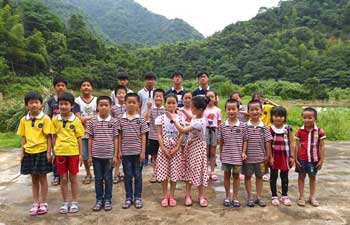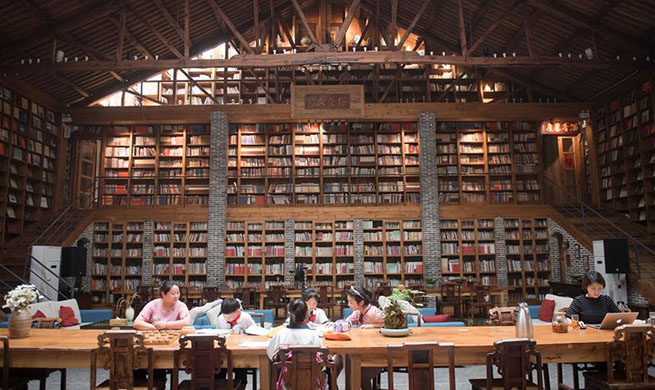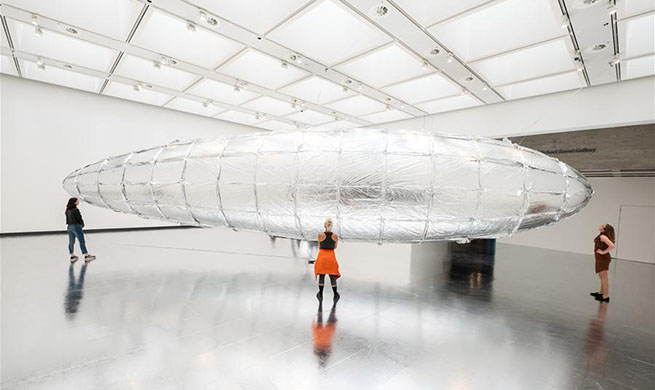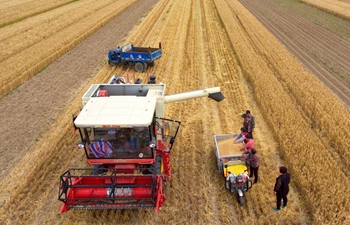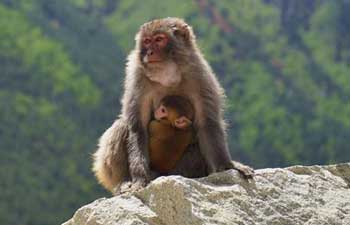by Farid Behbud
KABUL, May 30 (Xinhua) -- Faisal, 14, has spent half his life making kites inside a room specially designed for the youngster to conduct his business in the family home.
Living in a rental house, the seventh grade school student's work is beyond a full-time business, as he gets up at 6 a.m. every morning to get prepared for school which starts at 7 a.m.. After school, he regularly starts working at 10 a.m. and continues until 10 p.m. at night.
"I am at school in the seventh grade. After school, I make kites at home and take them to the market to sell to make some money to support my eight-member family," Faisal told Xinhua shyly.
When asked about International Children's Day, which falls on June 1 every year, Faisal said he had no idea about the day, but he would have to work on that day as usual.
International Children's Day has become an important occasion in Afghanistan in recent years, with festivities and celebrations being held in most primary schools and kindergartens across many cities every year.
Sitting on a small poorly made mattress, surrounded by colorful kites of different sizes, Faisal said while deeply focusing on his work that his total monthly income was only 250 to 300 afghani (less than 4 U.S. dollars) from selling each kite from 3 to 5 afghani, every day.
His father, Mohammad Aziz, helps as much as he can for his age, and his older brother who has just graduated from school also pitches in with the making of kites, to help earn enough money to meet all of their needs.
Unlike other Afghan children who are forced into child labor, such as brick making, construction work, mining, farming, with many others resorting to begging, collecting garbage or selling trinkets on the street, Faisal cooperates with his father and brother to make enough money to pay for their monthly 10,000 afghani (140 U.S. dollars), provide school equipment and buy daily necessities.
Raw materials for making kites are mostly imported from Pakistan, but they fix, assemble and prepare them for sale inside the country.
In Afghanistan, child labor is common, despite written laws that prohibit children younger than 18 from work considered hazardous or dangerous to their health, but, because of resistance from their needy families, the laws are widely ignored.
"Anyhow, I love this profession as it provides fun for other children," said Faisal.
Zalgai, who owns a shop full of colorful kites with different designs and the necessary materials, like unbreakable strings and spools, and usually buy kites from Faisal, looked very satisfied with Faisal's hard work to make quality kites, but advised him of making kites with a different array of designs.
He shows Faisal a few kites with new designs and encourages him to follow the examples, to help generate more customers.
"I am happy with your work and hope you progress more than ever, but you should change the design of your kites," said Zalgai, who added he was an entrepreneur and a job provider for numerous children in the nearby area making kites.
Kite flying is really popular here and one of Afghanistan's national outdoor sports. Zalgai said people have been flying kites for more than 100 years in Afghanistan.
Autumn, with its gusty winds, is the best season to fly kites, not only in Afghanistan but, also in India and Pakistan.






